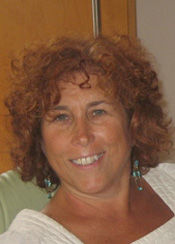‘Sukkah City’ competition
Published June 8, 2011
Here are some rules about making a sukkah:
It can be built on top of a camel.
The roof cannot be made of food.
ADVERTISEMENT
A whale can be used to make its walls. Also a living elephant.
Chances are no camels, whales or elephants – living or dead – will be used when “Sukkah City” takes place here this fall, but it’s good to know that those who take part in this competition have options.
Details are still being worked out, but essentially “Sukkah City” is a St. Louis-based competition for designing contemporary sukkahs following traditional Jewish guidelines – and there are close to 30 of them. The project is a collaboration among the Sam Fox School of Design & Visual Arts at Washington University, St. Louis Hillel and the Museum of ImaJewnation.
Built to commemorate the holiday of Sukkot, the sukkah’s religious function is to commemorate the temporary structures that the Israelites dwelled in during their exodus from Egypt. But there is a twist to this competition.
“The underpinning of all of this is a conversation about exploring and defining boundaries,” says Brian Newman, a local architect and Wash U instructor who is helping to organize the competition. “There are boundaries all around us, some are good, some not. We hope that these boundaries will be explored through this work in using the sukkah as a jumping off point.
“This is not inherently a Jewish competition,” Newman adds. “It is an architectural, intellectual project.”
Newman, along with Rabbi Andy Kastner at St. Louis Hillel and Naomi Fishman, curator of the Museum of Imajewnation, are the muscle behind the project. They plan to unveil the particulars about the competition in August, but have already confirmed that the top eight or so winning sukkah designs will be built and displayed at Washington University between Oct. 11 and Oct. 23. Those dates coincide with Sukkot, which runs from sundown Oct. 12 to Oct. 19, as well as with parents weekend at the university from Oct. 21-23.
Both Newman and Fishman hope the competition will have wide appeal. Although plans are to adhere to the traditional laws of making a sukkah, “there is a whole lot of room for interpretation and maneuvering, which can give you something very contemporary or even unexpected,” adds Newman.
Last year, a similar competition in New York garnered more than 600 entries from 43 countries. A jury chose 12 finalists, whose structures were displayed in Union Square Park.
















